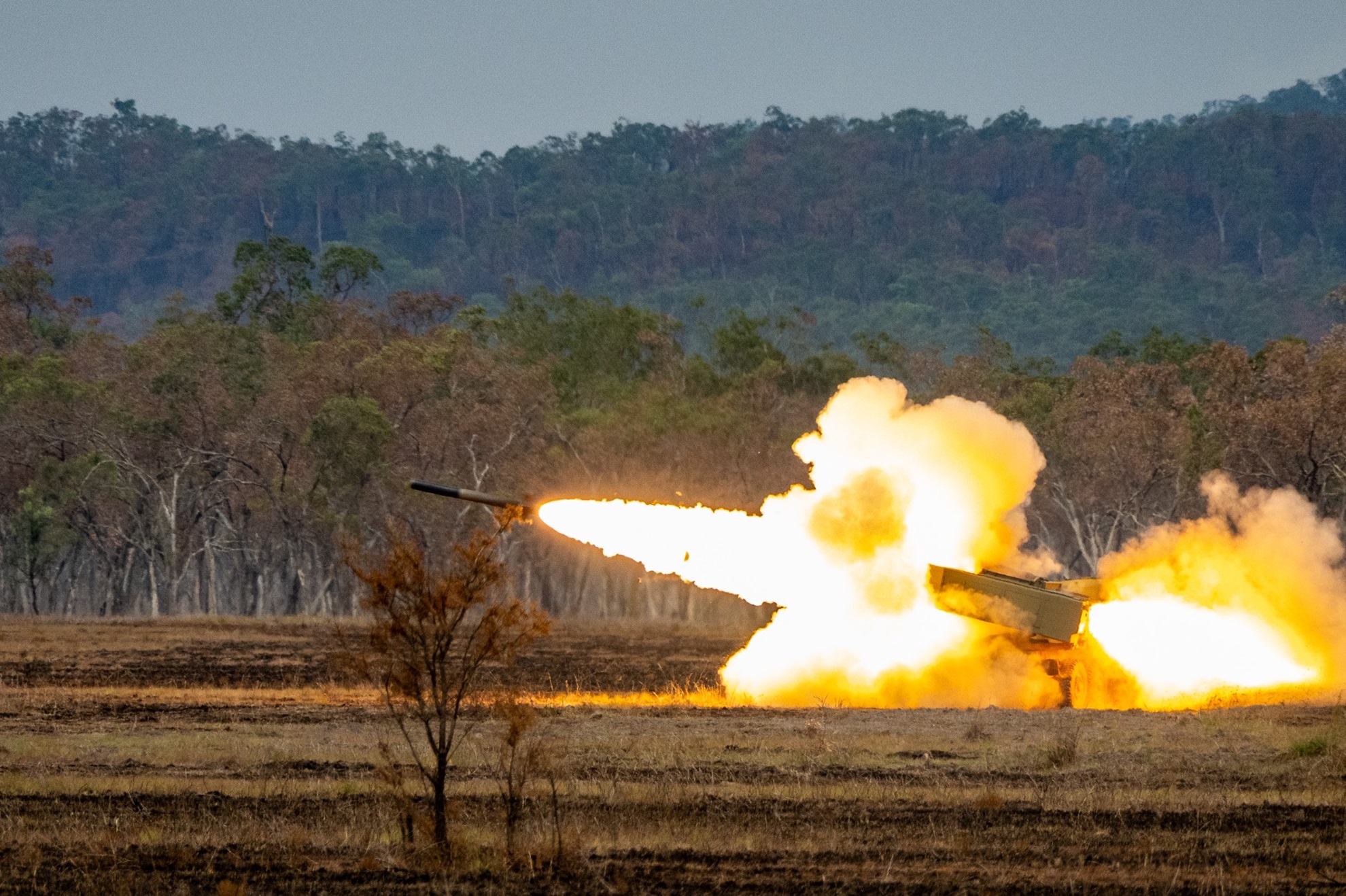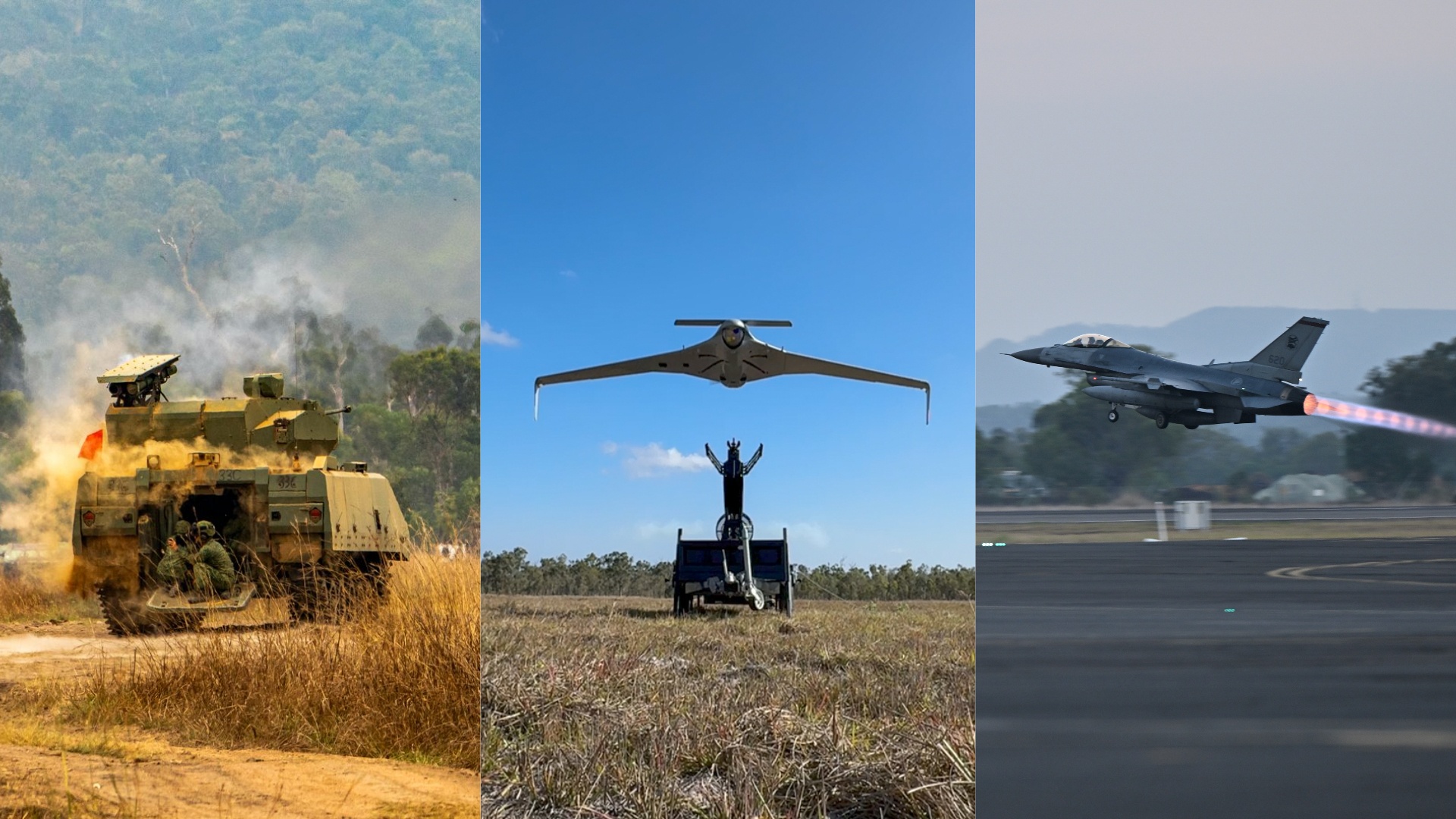A merchant ship is in trouble. A fast boat, called a skiff, is spotted closing in. The crew are on tenterhooks as they cannot be sure if it is pirates or fishermen. If it turns out to be a pirate skiff, months of being held for ransom could await with no guarantee of returning alive.
Compared to merchant ships taken by surprise, they can consider themselves lucky. The ship still has time to send out a distress call to the multinational forces patrolling the sea lanes under the Combined Task Force (CTF) 151, before bunkering themselves in a strong room while waiting for help to arrive.
Upon receiving the distress call, the RSS Intrepid - the closest warship in the area - swings into action. The S-70B naval helicopter is scrambled and up in the air within half an hour.
The warship then charges to the location and troopers on board prepare for the possibility of being called to board the suspicious vessel. All three Services within the Singapore Armed Forces (SAF) have to work in synchrony during these intense moments.
Minutes later, the RSS Intrepid receives news from the naval helicopter that the skiff is a fishing vessel and unlikely to be a threat.
Welcome to life in "pirate alley", a narrow sea lane off the Somalian coast which carries roughly a third of the world's sea freight and is prime hunting ground for pirates.
Eyes in the sky
In trained hands, the advanced radar and electro-optic sensor systems of the S-70B naval helicopter allow it to accurately detect and survey objects of interest. Even before the helicopter takes off for its daily surveillance flights, the aircraft controller starts gathering information such as weather data and plots the helicopter's flight path through areas of interest.
That job falls squarely on the shoulders of Captain (CPT) Tung Wanling, who plays the role of "the bridge between the Task Group (TG) and the naval helicopter to help form a clear maritime picture".
CPT Jason Kow, Tactical Coordination Officer (TACCO), added: "The naval helicopter functions as a forward eye for the ship and TG. I'm part of the team that helps the TG detect both small contacts and merchant vessels."
Apart from operating the mission systems on board the naval helicopter, the TACCO also communicates with its mothership, constantly exchanging a stream of information which allows senior commanders to decide on the appropriate response.
According to CPT Kow, tell-tale signs that a skiff might be involved in piracy include multiple outboard motors, which give the skiff the speed it needs to close in quickly on its target, and equipment such as ladders (to board its target) and a large number of oil drums (to fuel the additional motors) on board.
Ever ready
On the RSS Intrepid, much of the daily routine revolves around preparing for unknowns. As pirates may strike at any time, this translates to a need for maintaining a heightened state of readiness.
For example, each time the S-70B naval helicopter returns, it is quickly refuelled by the ground crew for its next sortie so that it can be called upon in the shortest amount of time, said Military Expert (ME) 2 Tham Ping Nam.
It is the same scene everywhere on board the 114m-long frigate as the crew keeps the myriad systems, from the small firearms used for the ship's security to the huge 25mm Bushmaster automatic cannon and General Purpose Machine Gun found on the Typhoon Mk II Stabilised Naval Gun system, at the ready.
"Everybody knows the moment that we call for all hands on deck, we need to switch very quickly from a state of rest to one of alertness," said Colonel (COL) Ken Cheong, Commander SAF Task Group (CTG).
The crew are organised into shifts, called watches, to ensure that on-board systems are manned round the clock. A typical sailor keeps two watches within a 24-hour period while responsibility for the daily surveillance flights is split between two sets of air crew.
The troopers who form the Ship Security Unit also keep to similar rotations to ensure that a team is ready to respond at any given time.
"This is one part of the deployment that is very valuable to us - learning how to sustain ourselves for long periods out at sea doing operations from the very basic to the very advanced within a short span of time," said COL Cheong.
For Operationally Ready National Servicemen like CPT (NS) Chang Jun Yan, who volunteered to serve his annual In-Camp Training stint as part of the deployment, the experience has benefited him in more ways than he imagined. "I've seen first-hand why the SAF needs to be here and be involved in counter-piracy operations," said CPT (NS) Chang, who serves as the TG Operations Officer.
Keeping watch
At the heart of the operation is the Combat Information Centre (CIC) where the warship monitors its surrounding seas.
"The frigate itself has its own organic sensors like the radar, the naval helicopter and maritime information systems which constantly gather information," explained CPT Sean Ler, Operations Officer.
This maritime picture compiled by the warship is supplemented by the constant exchange of information among CTF 151 warships as well as from forces such as the North Atlantic Treaty Organisation CTF 508 and the European Union CTF 465 whenever they come within the transmission range of other friendly warships.
To spread its forces evenly to provide maximum coverage in the Gulf of Aden, CTF 151 assigns a specific area to each of the warships under its command.
"Each of these sectors is roughly 400 square nautical miles, which means that we are keeping watch over an area about three times the size of Singapore each time we are out on patrol," said Lieutenant Colonel Vince Tan, Commanding Officer, RSS Intrepid and Deputy CTG.
International effort
Merchant vessels due to arrive within each sector are constantly monitored and radio links are established so that the merchant mariners can easily reach the warships patrolling there. In addition, a list of vulnerable merchant vessels is made available to the coalition forces by the United Kingdom Maritime Trade Office.
"These merchant ships are classified as vulnerable because of the kind of goods they are carrying, by physical characteristics such as low, multiple entry points which are suitable for boarding by pirates, or because of a history of being attacked, explained CPT Ler.
To further facilitate operations at an international level, there are three International Officers (IOs) seconded from CTF 151 on board the RSS Intrepid.
Said Lieutenant Commander Nicholas Doyle of the Royal Australian Navy: "From what I have seen from my short tenure on board, they are extremely capable and well prepared. So I would say that without a doubt they could respond at short notice and react extremely well at any incident." He provides advice on coalition matters, particularly with the Australian authorities.
In recent years, merchant vessels have also taken steps to deter pirates by installing spikes and water cannons to deter would-be pirates.
Ship shape
With about 150 people on board, every member of the crew has to pull his or her own weight when it comes to keeping the RSS Intrepid in top operational condition.
In fact, each crew member holds a secondary appointment on top of their primary duties. For example, some of the marine engineers double up as members of the Fire Fighting and Damage Control (FFDC) teams.
Operating like a small floating island, the crew has to handle everything from something as basic as the general cleanliness of the ship to rectifying defects in the ship's systems should they arise.
"We are on our own while out at sea. Even if there is a major defect, we have to rectify it. If we don't get it up, it's going to affect the mission," said Marine Engineer ME3 Ramesh Gopalan.
He recalled a leak in one of the diesel generators which had the team working through the night. "Being out here is a real test of what we can do. Even though it meant 19 hours of non-stop work, we did it and that sense of achievement was really satisfying."
Besides being the second man in charge of the engineering department, ME3 Ramesh also doubles up as the ship's barber!
Intensive prep
For the ship engineers, preparations for this extended period out at sea started as early as the beginning of this year. The long to-do list included the loading of spare parts and making sure that all major maintenance works were carried out before the ship set sail.
"Since we can't possibly bring everything while the ship is out at sea, we looked at past trend reports to decide on what we needed to have on board," said Senior Marine Engineer ME4 Ching Chuin Yiaw. Together with his department, he handles all the platform systems such as the electrical generators, water supply and air-conditioning systems.
To accommodate the required crew size due to the extended length of deployment, existing rooms had to be converted into sleeping quarters. Some cabins also saw the addition of beds and lockers.
Ship life
While personal space on board ship is tight, the crew of RSS Intrepid quickly learn to manage. Certain areas of the ship are always quiet while the dining room is always open to those who want to chat with their fellow ship-mates. It is through these unspoken rules that the warship manages to become a home away from home.
In between their watches, the crew attend to administrative matters before squeezing in time for some shut-eye in preparation for their next watch. Rest is a precious commodity on board and even mundane activities like finding time to exercise are a test of discipline.
"Usually after our watch ends, we hit the gym to ease the occasional stress and tension," said ME2 Ebenezer S/o Moses, a Weapon Specialist who operates the Typhoon gun system, among others. "It's a fight for time to exercise because of space constraints and limited time."
When asked if he misses his family, Senior Combat Systems Engineer ME5 Vincent Chan said: "Sure I miss my wife and daughter but we've got a job to do here."
With multinational forces on constant patrol in the region, pirate activities are currently at a four-year low. The Gulf of Aden might shed its "pirate alley" moniker just yet.
6,900
Nautical miles
Distance covered by the RSS Intrepid as of 1 Nov |
490 x 20
Nautical miles
Size of the narrow strip of water commonly referred to as the Internationally Recommended Transit Corridor in the Gulf of Aden |
6
Number of overseas ports which the RSS Intrepid will call at for re-supplies and upkeep during its three-month deployment |
150
Number of crew it takes to man the RSS Intrepid for anti-piracy operations due to manpower requirements for extended operations. The Formidable-class frigates are usually crewed by 91, including 19 who form the air detachment |
"From what I have seen, (the crew of the RSS Intrepid) are extremely capable and well prepared. So I would say that without a doubt they could respond at short notice and react extremely well at any incident."
- Lieutenant Commander Nicholas Doyle of the Royal Australian Navy





